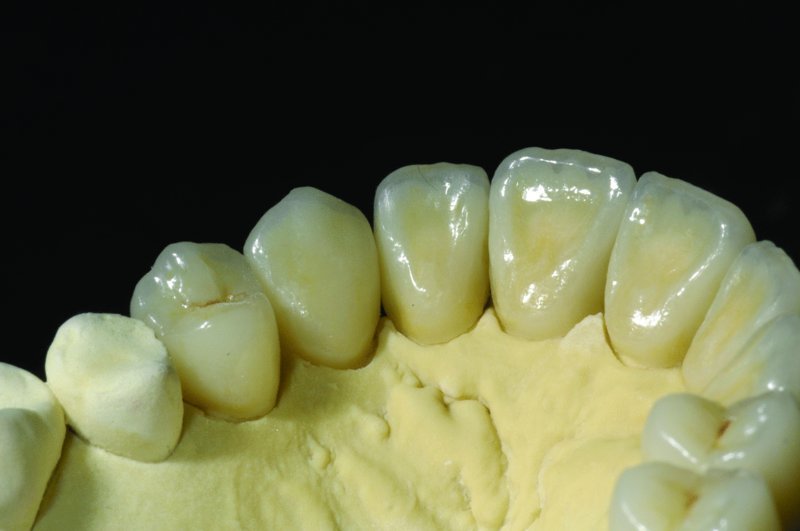Appraisal and Cementation
Christopher C.K Ho
Principles
Cementation is the final stage in providing a successful restoration and requires as much care and diligence as the preceding stages. The final result may be suboptimal should a restoration not seat fully, leading to poor marginal integrity, recurrent caries and poor gingival health as well as occlusal interferences.
Appraisal
Careful evaluation of the restoration is an important step to assess that the crown seats entirely, with excellent marginal integrity and fit. There are three stages to this appraisal.
Check the Crown on the Prepared Die
The crown should be checked on the prepared cast to ensure complete fit with no marginal deficiency or over-contouring. Check whether the die itself has been damaged at all, as it may be altered, and consequently may not allow your crown to seat in the mouth. It is good practice to have a second pour of the die or a ‘verification die’ to check the fit on an unaltered cast to ensure that the restoration seats on both dies (Figure 6.6.1).

Figure 6.6.1 Assessment of crowns on the dies and unsectioned models to check fit, contact points and overall form and contour
Seat the Crown
The prepared tooth must be thoroughly cleaned of all temporary cement and plaque. The use of a pumice slurry or aluminium oxide air abrasion 27 micron at 40 psi is recommended (Figure 6.6.2). Once clean, the restoration is placed onto the preparation and should seat fully. There may be several reasons that the crown does not seat, including tight proximal contacts that cause binding of the restoration, trapped cement or soft tissues, inaccurate impression or poor fit of the restoration. The crown may be adjusted with the use of articulating film, disclosing material or aerosol disclosing sprays. Careful and judicious adjustment may allow the restoration to seat fully to the prepared depth; however, a new impression may be required should a crown not seat fully.

Figure 6.6.2 PrepStart (Danville Materials, San Ramon, CA, USA) air abrasion to clean preparation prior to seating of restorations. Alternatively a pumice slurry may be used to clean the preparations
Seated Crown
Once the crown is fully seated the following should be assessed carefully:
- Marginal fit. This can be assessed by the use of a sharp explorer or by radiographic means. McClean and von Frauhofer in a five-year study on more than 1000 restorations concluded that 120 microns is the maximal tolerable marginal opening.1 They also report that discrepancies less than 80 microns can be difficult to detect under clinical conditions. A good marginal fit could be considered to be from 40 to 100 microns.
- Proximal contact. Floss is used to assess tightness of contacts. Adjustment may be obtained by use of a small piece of articulating film between the proximal contacts or by a disclosing material.
- Aesthetics. Assess aesthetics with input from the patient to ensure that they are happy with the final shade, form and contours of the definitive restoration, as adjustments are relatively easy at the pre-cementation stage.
- Occlusion
Stay updated, free dental videos. Join our Telegram channel

VIDEdental - Online dental courses


